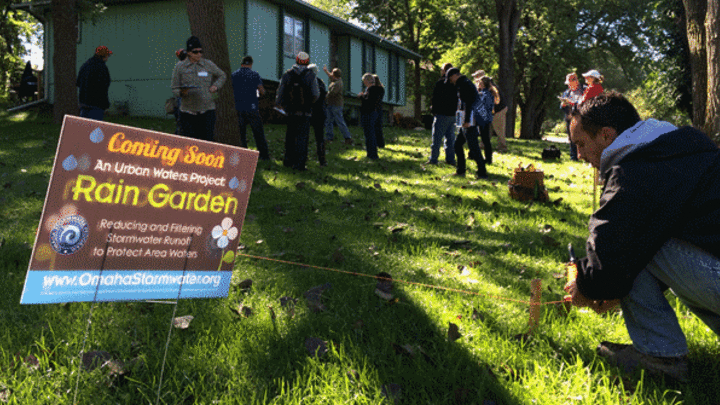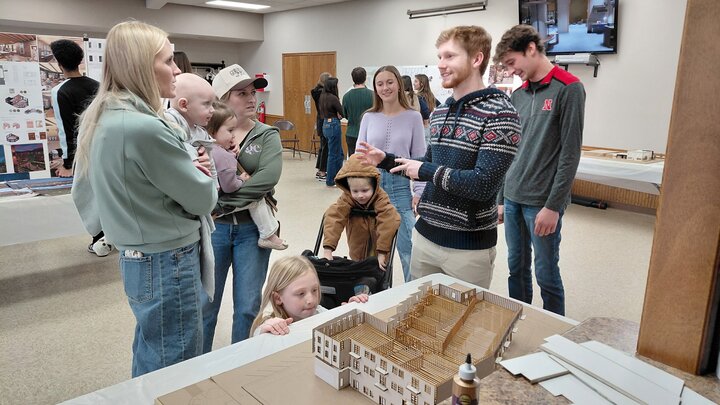The idea of untreated sewage overflowing directly into creeks, rivers and various waterways is disheartening to think about. Like many municipalities, Omaha’s older neighborhood areas have a combined sewer system (CSS) which means its infrastructure was designed to collect rainwater runoff, domestic sewage and industrial wastewater in the same pipeline. During dry weather, the water and waste is transported to a sewage treatment plant, where it is treated and then discharged to a water body. However during periods of rainfall or snowmelt, the total volume in a combined sewer system can exceed the capacity of the sewer system or treatment plant. When this happens the sewer system is designed to allow overflow to be discharged directly into nearby waterways and streams without being treated. While not all municipalities have this type of sewer system, they are a priority water pollution concern for the nearly 860 municipalities across the U.S. according to the Environmental Protection Agency (EPA). While Omaha’s new construction and developments are designed with a separate sewer system infrastructure where overflows are not an issue, the older CSS infrastructure is still in place for many of the neighborhoods east of 72nd street.
Working to abate the problems created by stormwater runoff and combined sewer system overflow in the Omaha area, Community and Regional Planning (CRP) Associate Professor Dr. Zhenghong Tang at the University of Nebraska-Lincoln and the Omaha Stormwater Program have secured an EPA grant titled “Improving Omaha's Green Infrastructure Training for Workforces, Students and Residents” which endeavors to enhance and encourage the use of green infrastructure principles and practices in the Omaha area through education and various grassroots efforts and activities.
The coalition organized and galvanized their educational efforts with the creation of the Green Infrastructure Education Network aimed at connecting community organizations, small businesses, underserved communities and schools throughout the Omaha metro area with education and outreach activities focused on water and green infrastructure principles and practices.
Since the project began, the network has created and disseminated various educational tools and resources for the community including the recent completion of two educational guidebooks “Green Instructure Toolkit for Schools” and “Green Infrastructure Industry Toolkit” (both are available online).
The network has also developed a residential section for homeowners detailing ways they can incorporate green infrastructure into their landscapes. Through these outreach and educational efforts, the network endeavors to create greater awareness of green infrastructures to increase its use by homeowners, business leaders, underserved communities and the general public, and how Omaha can benefit from its use.
“If you want to make significant change that makes a real community impact, it has to be an educational effort at the grass roots level, otherwise it’s never going to work long-term,” said Tang.
“Working on various stormwater management and green infrastructure projects, I’ve realized most people are not aware of the problems associated with stormwater in their neighborhood or in general across Omaha,” said Andy Szatko environmental quality control technician with the City of Omaha and Master of Community and Regional Planning alumnus. “The Green Infrastructure Education Network is a great resource to further educate the community on stormwater related issues and how green infrastructure can help address those issues while enhancing Omaha.”
One of the root causes of water runoff and overflow occurrences is the disruption of the natural water cycle in urban areas. Unlike in grasslands and forest where water can be readily absorbed, cities are covered with impermeable surfaces including rooftops, concrete sidewalks, streets and parking lots. A considerable amount of water therefore cannot be absorbed and runs off into gutters, storm drains, sewer pipes and other gray infrastructure, carrying with it trash, sediment and various contaminants including motor oil, lawn fertilizer, nutrients and metals which pollute waterways and cause sewer overflows.
Water runoff also has a negative impact on aquifer and groundwater levels because those water resources are not being replenished and are being channeled elsewhere. According to the EPA, a typical city block generates five times more runoff than a woodland area of the same size.
However by implementing more green infrastructure principles and practices, such as planting trees, restoring wetlands, installing rain barrels or using permeable pavement, Omaha citizens can play a significant role in managing and improving water quality in their area.
For more information on green infrastructure or to obtain one of the many educational resources referenced in this article, visit: https://omahastormwater.org/residential/the-green-infrastructure-education-network/.




